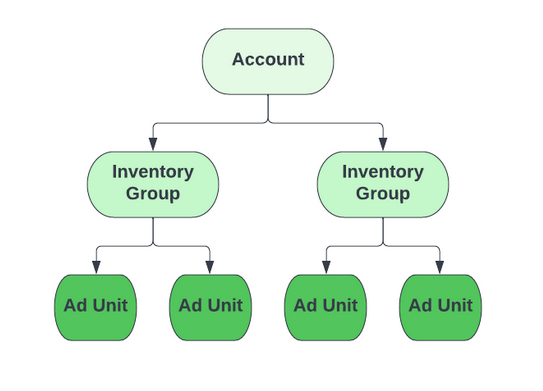
Sell-Side Hierarchy Overview
This guide details Criteo Commerce Grid's sell-side hierarchy.
Knowing how sell-side objects are connected on our platform will help you make the right decision in mapping your domains/app bundles with ad units.
Overview
Account is the highest-level hierarchy entity representing an end client (supply partner) for Criteo Commerce Grid, a publisher, or a publisher network.
Accounts sort inventory into Inventory Groups to break up their supply by any of the following principles:
Integration type - Each integration connection with Criteo Commerce Gridwill have a separate inventory group. Amazon TAM integrations should run under a separate Inventory Group vs. Prebid.js, Prebid Server, or any other integration types.
Ads.txt entry - If you want to run a portion of inventory under a separate Pub ID, this is a viable use case for Pub Networks with some major publishers willing.
Inventory types or media type - though Criteo Commerce Grid provides granular reporting that allows accessing these dimensions, some publishers may still want to create separate Inventory Groups.
Ad Unit is the smallest sell-side object. It represents an ID mapping to a single physical slot or, in some cases, multiple physical slots that ads can run on. The ad unit IDs need to be populated in the bid request (either the integration type is header bidding or tags) so that our platform can identify the source of the traffic.
Domains/App Bundles correlate 1:1 with the domains or app bundles you monetize.
Please visit the Supply Onboarding guide to learn how to onboard your supply across these hierarchy levels.
